We had 54 attendees at our first meeting of the new year, including 7 guests.
Mary announced the 50/50 which Roberta was in charge of.
Tom Jones was there and offered great gifts for the raffle. Thank you, Tom! Tom Jones will offer a Feb. 16 pop up workshop for 20 people. Look for an email from Mary.
Janet demonstrated the CFWS Members directory to the group.
Mary Kathryn displayed a great selection of books of Chinese Brush Painting and more, in our library!
CFWS website is up and running for the Anne Abgott workshop and annual members show submissions.
Susan G. said we already have 10 members signed up for the Abgott workshop.
Mary Ellen encouraged members to enter our show ASAP.
Marcela announced the next Plein Air on Jan. 17th (Wed.) at Nehrling Gardens in Gotha.
Diane offered small brochures for members to pick up and share with interested folks.
Asian Art demonstration by Joan Lok:
Joan demonstrated another tool for your toolbox to enrich your watercolors. Joan started with the rice paper, passing around samples, which is not made from rice but bark.
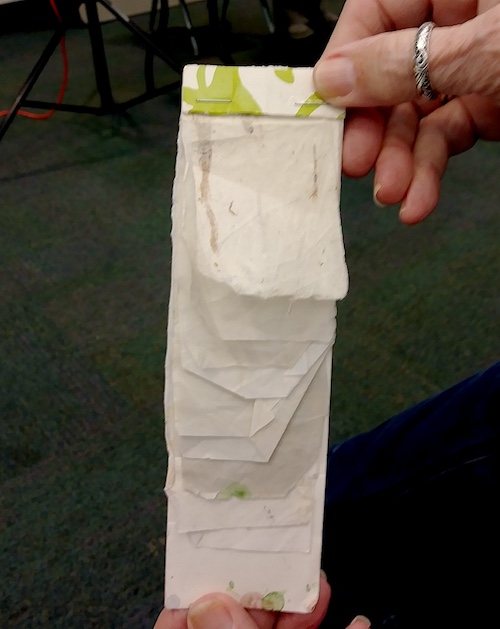
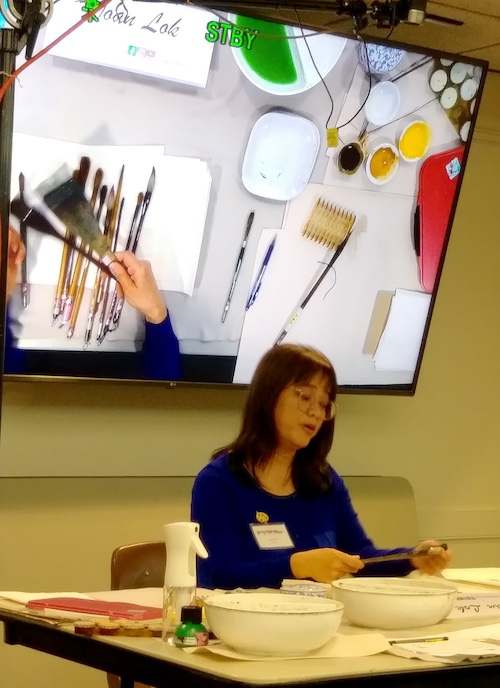
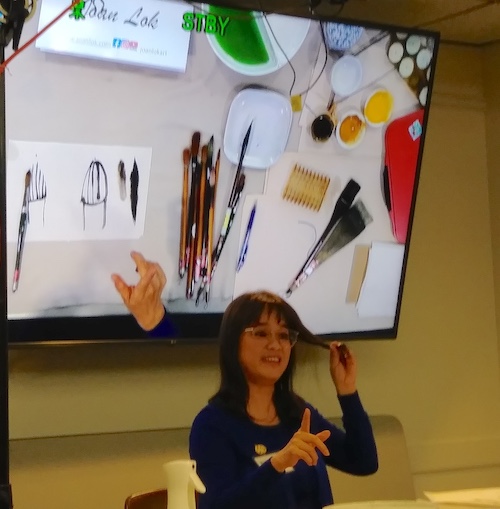
Asian brushes are tapered to a point. Strokes are controlled by pressure, the harder you press the thicker the line. Only the ends of natural hair are used (hair that has never been cut). Mountain horse brushes (landscape brush) are stiffer, made from horse or weasel hair. Softer white brushes are made from goat, sheep or rabbit. Combination brushes are 50/50. For more info, check out her YouTube videos on Asian brushes.
Sumi-e ink is a black ink made from carbon. Wood or vegetable oil is burned. The ink is permanent if you get some on your clothes, and will paint light grey to dark black. Joan will dedicate brushes to reds, or blues, or ink to prevent contamination. Pencil lines are not used on delicate rice paper. But soft charcoal will work and can be brushed off. Opaque white is OK and used frequently.
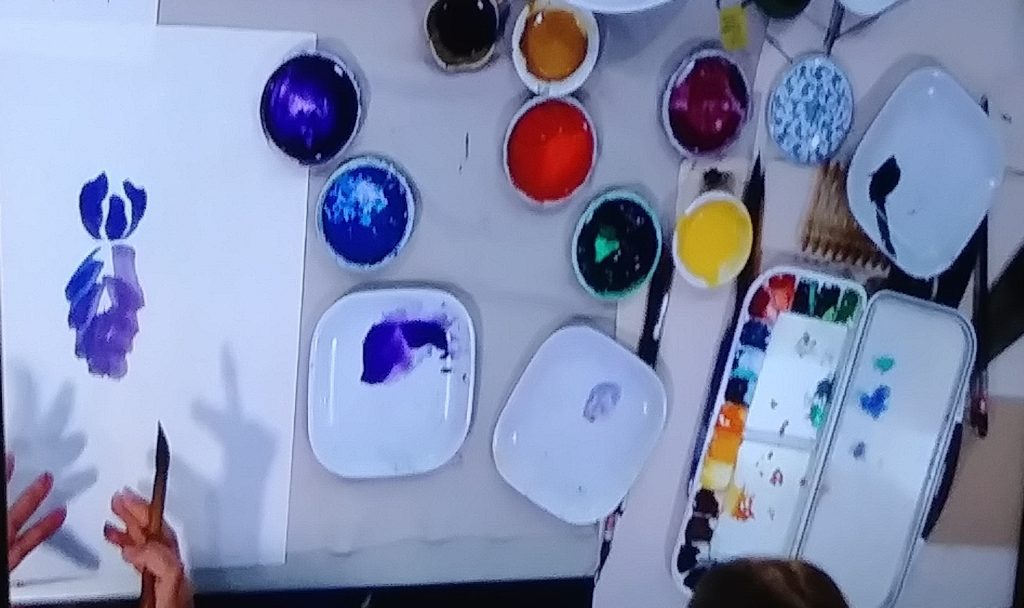
To paint grapes or iris, load the brush with red, blue and make a purple stroke for the 3 up and 3 down petals of the iris. Think of composition as you paint. Bearded Iris – decide color first: magenta, blue, purple. This is a wet on dry technique, but the paper absorbs the paint right in.
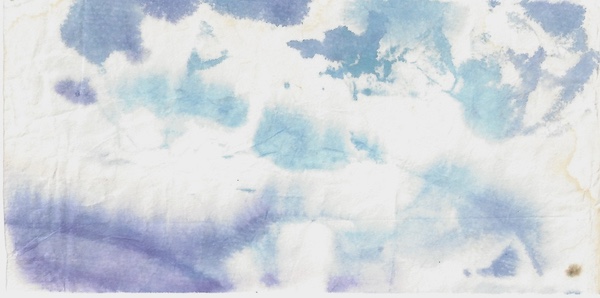
Someone asked about how she did the wave in her award-winning painting “Come Play with Me”. This is a monoprint technique, place 2 colors on a plastic plate, then press the rice paper in to soak up the colors. Let it rest and wait
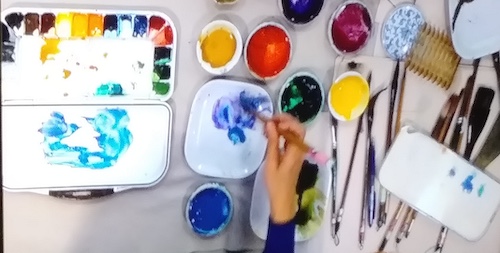
Sunflowers represent positivity and joy. Have some knowledge of the flower and if you use remember not all fake flowers are accurate. Use real ones if you can find them. Joan did a tilted view of the flower so it wasn’t a “mug shot”.
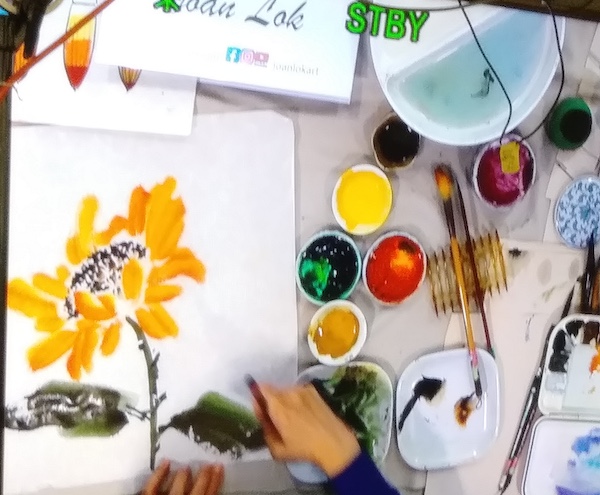
To paint a sunflower … load the brush with water, light yellow, orange, and red to mix the colors in the brush, not on the paper. She used a second brush for the seeds in the center. Then a brush loaded with ink and green for the stem and leaves. Add calligraphic strokes for the veins.
To try this technique on watercolor paper, try wetting if first or do the strokes slower, because watercolor paper is thicker. Experiment. It is easiest to paint on rice paper and then mount onto watercolor paper which is acceptable in most shows. “Art is not how you start but how you finish”
She has books on how to paint leaves, flowers, etc. See Amazon. Practice by drawing trees!
Thank you for a wonderful demonstration, Joan. See more of Joan’s work and zoom workshops at:
https://www.joanlok.com/flowers-birds
After our general meeting, Jane B. gave instruction on how to photograph artwork and submit for shows.
Make sure it’s straight and squared up in your view finder. Make sure it has good lighting and remember to crop to show only the image, not the background. Remember to rename your file according to our instructions on the website.
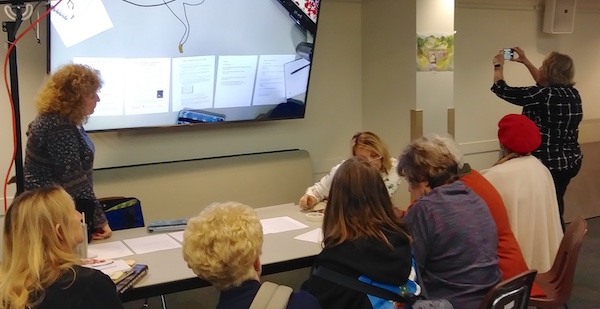
Most cameras use a 72dpi, which is good for our juror to view on a monitor. Jane has information that she can email to anyone needing assistance. So, contact her if you need help. Thank you Jane!
Also, there are YouTube videos, and artist articles on the internet, to help you:
https://www.artworkarchive.com/blog/4-steps-to-photographing-your-art-like-a-professional
Next month join us for Cheryl Fausel as she demonstrates her unique abstract realism style.See you soon
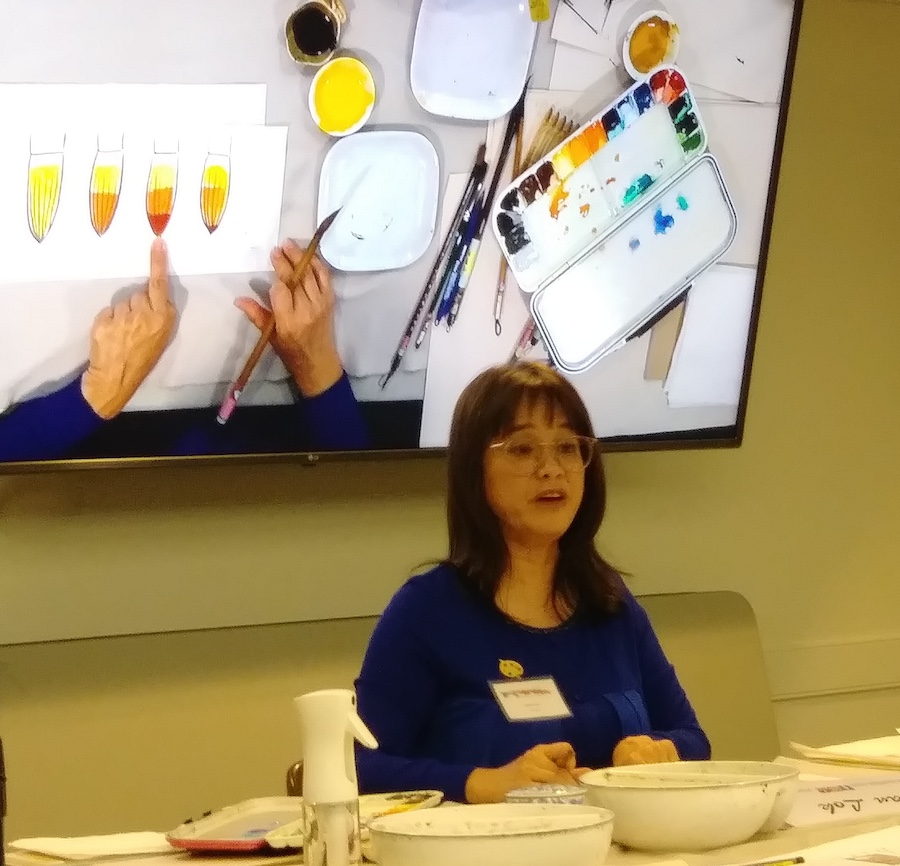
Leave a Reply
You must be logged in to post a comment.